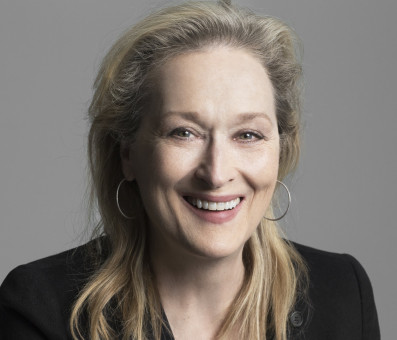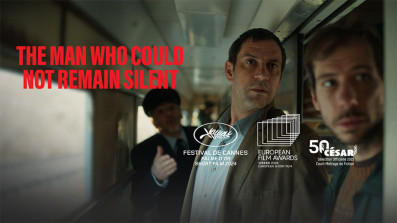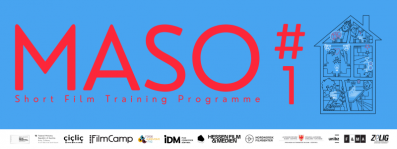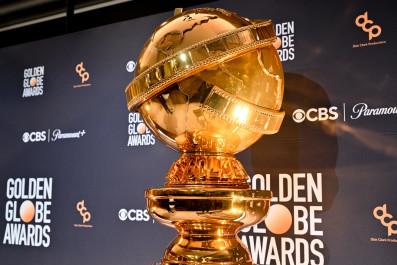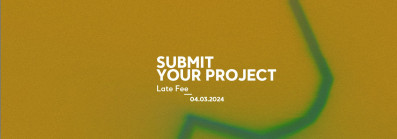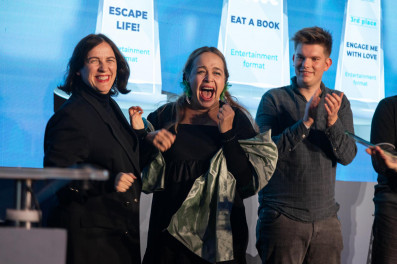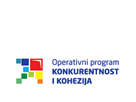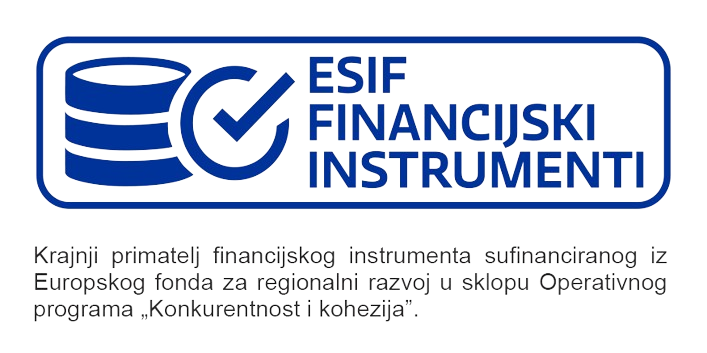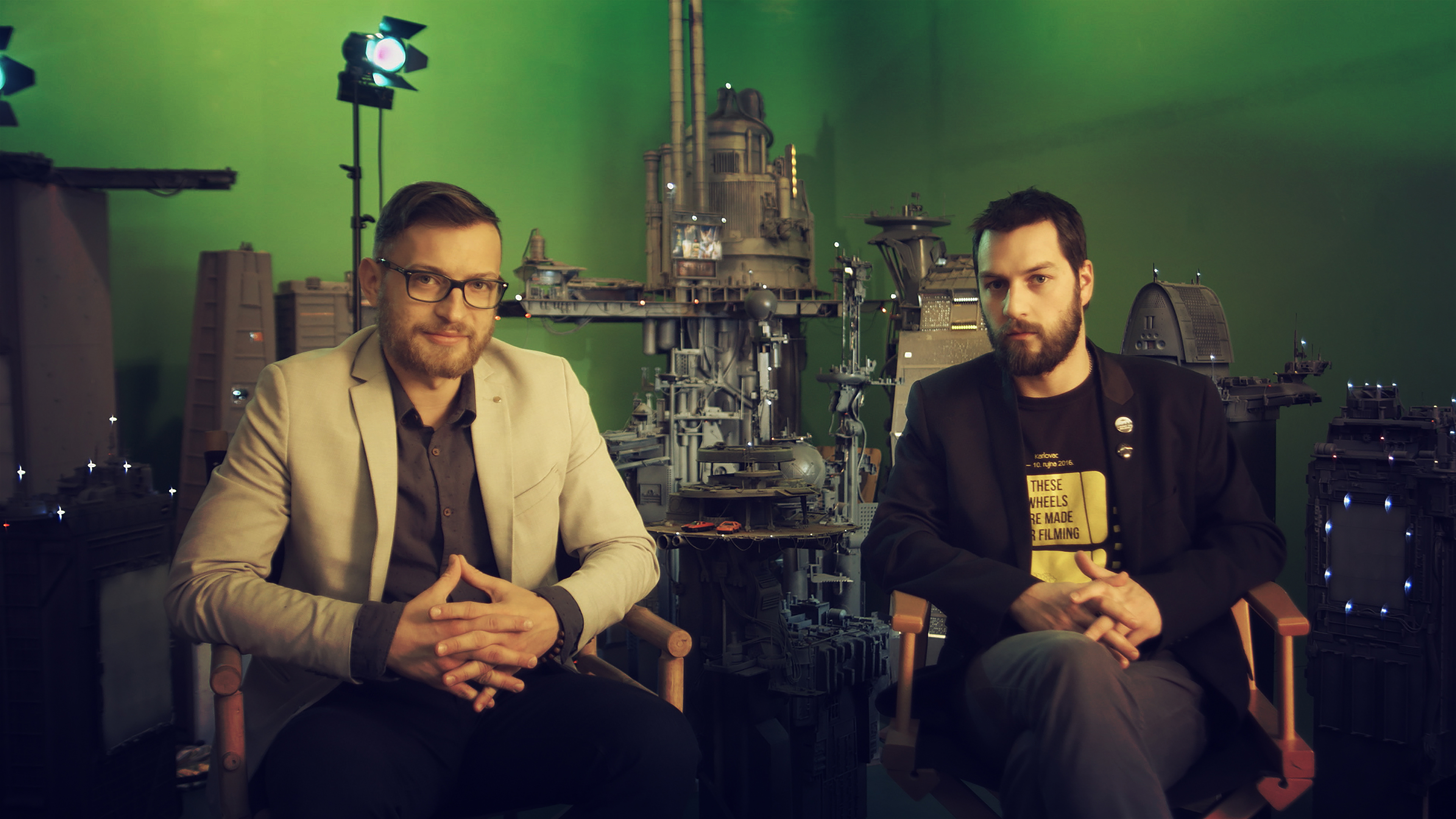
Interview: How the Croatian sci-fi "Slice of Life" won over Kickstarter
"We were often told our pitch video was one of the best they saw."
Not many of those following Croatian cinema missed the story of Slice of Life. Now more than five years ago, Dino Julius and Luka Hrgović started spending their summers in a small garage, using everything they could find for building miniatures, sets, and practical effects for their short sci-fi homage to the 80s films of the genre. But set aside the influences, their idea was completely original, and in a true “slice of life” manner it follows a man, a small-time dealer, who needs to find enough money in one night to be able to board a space ship and leave Earth threatened by an apocalypse.
After working with a non-existing budget for a couple of years, the pair decided to build a Kickstarter campaign, and with a dedicated approach (and some luck) they raised more than 80,000 dollars which helped them finish the film. Slice of Life went on to visit festivals in Spain, Japan, USA and bring back home several awards – of which the last one is from their home country, for Best Croatian Short at the 2020 Betina Film Festival.
Following their story, we have read many great articles about the duo but were left with some questions we wanted to ask. How did the beginning look like, how did they manage to grow such a successful Kickstarter campaign, and what is the crowdfunding potential for the film industry in Croatia – these are some of the topics we had in mind, so we spoke to Luka Hrgović, one half of the Julius Film team.
For those who may not be familiar with it, take us back to the initial idea. Where did it come from? And let’s be honest, having an idea is one thing, taking the first steps is another. How did those steps look like?
We are two film enthusiasts from Croatia and we run a production company that mainly produces TV commercials but we are trying to focus on filmmaking as much as we can, as that is our passion. Our credits on Slice of Life go on and on: we both directed and edited, built the sets, created the props, did visual and special effects… Dino was also a director of photography and I am more interested in effects so I handled the miniatures and props. The two-man band basically. Being fans of 80's sci-fi movies and wanting to explore the genre, we came up with a really small story that takes place only on a small number of sets that we were able to build. Also, our approach to visual effects was different from other sci-fi movies that are made these days. We wanted to use the “old school” Hollywood approach: miniatures, matte paintings, front projections... Basically, the techniques that haven't been used since the '90s, so it was pretty hard to learn them, but also very exciting.
And if you visit the Slice of Life YT page this excitement is noticeable. Next to several production diaries and travelogs following their trips to Tokyo and LA, Dino and Luka filmed a half-hour tutorial on building miniatures, painting them, lighting them, filming them in passes, and editing them in postproduction. A crash course, if you will, for all of you who may feel inspired, but not enough to go through the reading materials. As Luka explains, they did all of this without a budget, until Kickstarter came into the story.
After two summers we spent in our garage filming we decided to edit a short trailer with the best shots we had at that point and upload it to Youtube. The reactions were very positive and we were featured on some very popular entertainment websites like The Verge and io9 where we mentioned that we are thinking about doing a Kickstarter campaign. A day later we got an email from Kickstarter's employee who said he is a huge fan of Sci-fi and Blade Runner and that he would help to push our campaign a little bit. We were pretty surprised needless to say. But many months passed before we even started the campaign.
I imagine that using such a popular platform requires a well-thought-out campaign and a decent time investment. How did you approach the decisions around setting your goal, the timeline, rewards, and the presentation of the project itself?
It was pretty time consuming to create the campaign. I think it took us seven months on and off to properly plan and create all the materials. We definitely researched a lot of the past successful film campaigns, how they presented them, and how they set up their rewards. We just took what we liked and then added some of our own ideas on top. One of the things we noticed is that most of their pitch videos pretty much sucked. They were too long and it was always somebody talking in a monotone voice explaining something, and that way a viewer would lose interest really fast. So we decided to make it snappy and humoristic which we think helped us a lot in engaging people. Later we were often told our pitch video was one of the best they saw. The hardest decision was how high to set the funding goal. With Kickstarter, the thing is if you don't reach the goal your campaign fails. You don't get to keep any of the funded money. So we had to find the balance between something reasonable but at the same time not too low. We set the bar at 25.000$, and to our surprise, we got over 81.000$ in the end.
All this comes down to backers. When it came to creating a community around your project and attracting new supporters, did you look to social media, conventional outlets?
During our research for the campaign, we learned that one of the most important things is to have a strategy prepared. You can't just start a campaign and hope someone will find it and back it. We already had a Facebook and Instagram pages for the film with a handful of fans who were following our progress. There wasn't that many of them, but they were the people who were prepared to back on the first day. We also collected a lot of contacts from the popular movie website editors, and we sent the info about our campaign to over a hundred email addresses. There's such an abundance of projects and information these days that it was impossible to even get a response from them. Of over a hundred contacts only a few answered and wrote an article. So it's hard to say how much that helped. Our biggest help came from the Kickstarter itself. They featured us on a front page a few times during a 30-day campaign which got us great visibility. In hindsight, I think we created a cool and engaging campaign but it could have easily ended differently if there wasn't a lot of luck involved.
So, what’s the strategic wisdom they would share now? Luka believes the main thing that comes to mind is the perception around funding goals.
When we used to look at other campaigns we thought „Wow, look at them, they earned 100 thousand dollars!“ Or any other amount. And I'm sure most people look at it that way. We only see the final amount that Kickstarter displays on the finished campaign. But the thing is that first, the Kickstarter takes a certain fee, then you transfer the money to Croatia and pay Croatian taxes, then you put aside the amount that you need to spend on perks and shipping to your backers, and in the end, you basically end up with about 20% of the money that you can actually spend on your project.
As he explains, they used the money for some new gear, a 3D printer for miniatures, paying expenses for people who helped them with filming and that was it.
We learned that Kickstarter is very good for promotion and creating a fan base, but one should definitely not start a campaign with the idea of getting rich. It might be different for other types of campaigns though. I guess if you have only digital rewards you can save money that way, but that wasn't our case so we can't be sure. – adds Luka.
Can you tell me how much did the campaign change the idea around the film itself? If it did.
It definitely did. Before the campaign Slice was envisioned as a ten-minute film set in only a few locations. It had a much smaller scale. After the campaign we realized we now have a certain „fanbase“; a lot of people are looking forward to the film and we decided to make it bigger and more ambitious. We added a lot to the basic story we had, expanded our main character, added a few completely new scenes, and a lot more visual effect shots. Basically, Kickstarter gave us the push to make the film bigger and better.
One of the creative decisions that stand out is to make Slice of Life a silent film. This, as it turns out, was the decision that the pair thinks contributed to their campaign and Luka connected it to the potential of crowdfunding for Croatian filmmakers when asked about his thoughts on the topic.
It’s a hard question to answer, but I think the language is the first barrier we would need to cross. People outside Croatia probably wouldn't be interested in backing a Croatian-language film. It's just not appealing to them. What movies get the most money at the box office? English-language blockbusters. It's the most popular language in the world of course. Another thing blockbusters show us is that people like genre films, and that's also something that Croatian cinema lacks. We were really lucky because we were making a sci-fi film which is a very popular genre. We also completely avoided the language problem by deciding our characters will not say anything in the film. That way our project had international appeal. There were some successful Croatian video game campaigns, and they worked because the games were in English and they easily hired voice actors for game characters. I don't know how would that work for a film unless you basically cast foreign actors. It's a very interesting question. When Croatia hopefully gets another successful film campaign I will be very interested to see what will that project look like.
So, it's been a year and a couple of awards since your world premiere. What is next for "Slice of Life" and yourselves?
So far the reactions to our short film were great! We were lucky to get into some of the biggest short film festivals all around the world and win some awards. We personally visited some of the festivals and very often after the screenings people would approach us to chat about the film. Even on Youtube where anyone can be really honest and say what they want we’re getting very encouraging comments, which is really nice. People also seem to appreciate the old school technical approach we took in creating it. Right now we are writing a script for a feature film. Some elements of the short film will be reused, but it will feature a new set of characters and will have a completely original story. We would like to create a satirical dark comedy in a sci-fi environment and shoot it here in Croatia with a mixed cast of Croatian and foreign actors. We are also designing and building an original world from scratch this time, to be more authentic. Brand new car designs, original buildings, etc… It’s a ton of work but creating worlds is a fun process. Wish us luck!
And we do! As for you, if you haven't seen the film yet, you can now do it for free, on the Slice of Life YT page.



